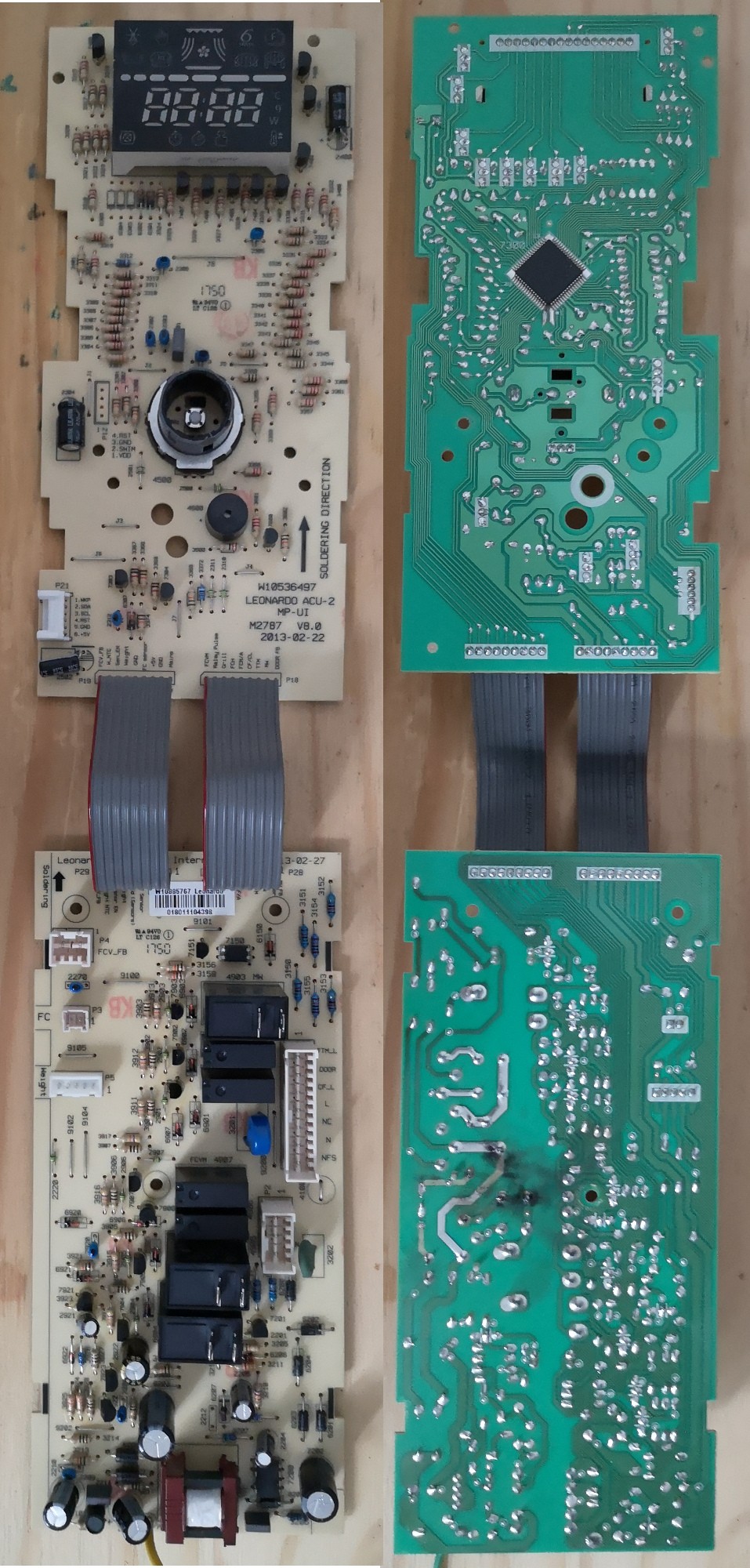So last summer, our oven/mw (Whirlpool JQ280) broke (i'm thinking of overheating since it was very hot, but it may as well be electrical default). I tracked down the problem to the motherboard, which has indeed some weldings that burned. I bought a new one and the oven is working again.
I now have this defective motherboard, separated in two parts. The burned weldings are on the back part, and the front part still has a four-number display, a button and what i assume to be the main chip. I figured that i maybe could get only the front part and make some kind of clock with it.
The easy version would be to feed it 5V current, and if it's not broken it should work as if it was still in the oven, providing a time display. Is there anything dangerous or tricky about that ? I already built/modified a few electrical circuits (spotlights, guitars) but it was always with simple components used for their intended purpose, and i have close to 0 knowledge of electronics. I specifically have no idea if there might be danger of electrical shocks and if it's important to ground it (There are two circuits that are labeled GND on the connection between the two parts, and a yellow/green cable that was connected to the metallic structure of the oven going from the bottom of the back part).
The more complicated version would be to also reprogram the chip, out of curiosity. From Internet, i deduce that it takes some specific hardware to "flash/burn" the chip : either some box in which you put the chip, either some clip that you put around the chip. The problem here is that the chip of this motherboard seems to be 64pins : i think un-welding/re-welding it would be far beyond my welding skills. But on the other hand, it doesn't seem to exist clips adaptators for more than 16 pins. Can you confirm that reprogramming this chip would involve precision welding ?
Anyway, thanks in advance for your feedback, have a great day !
